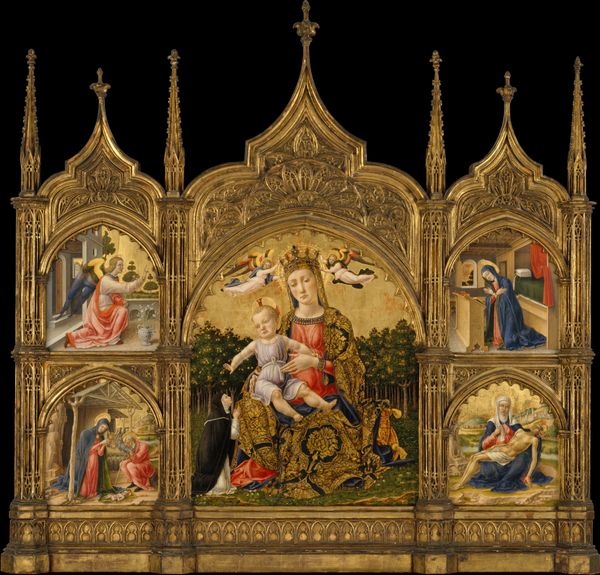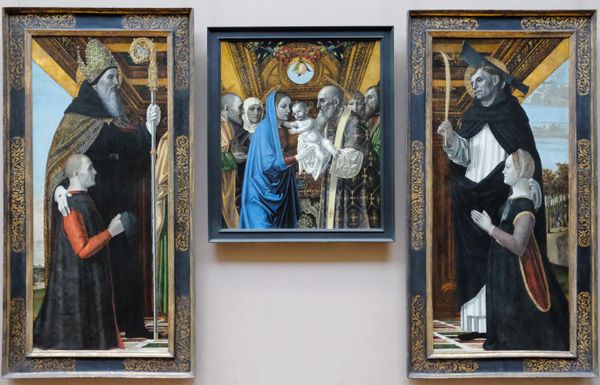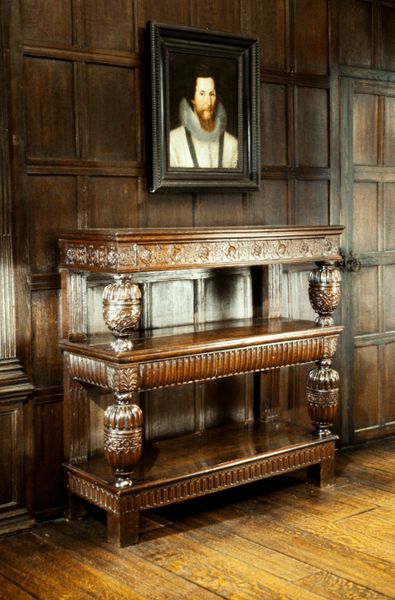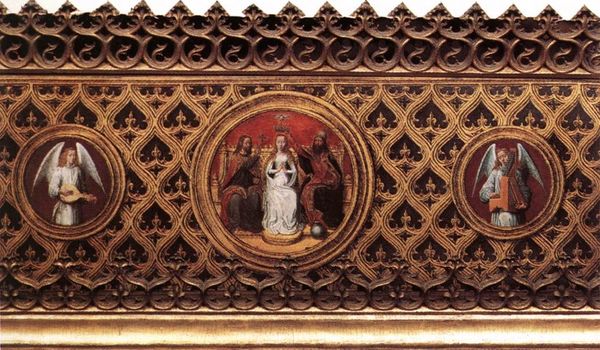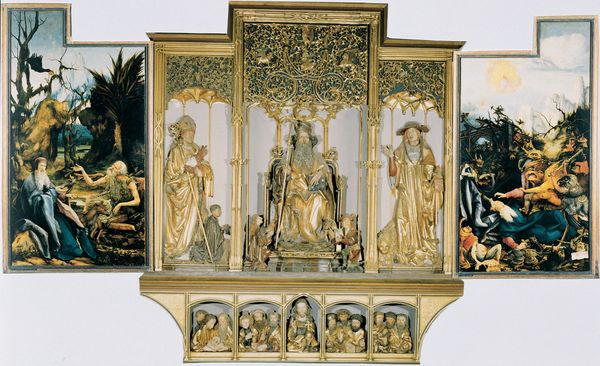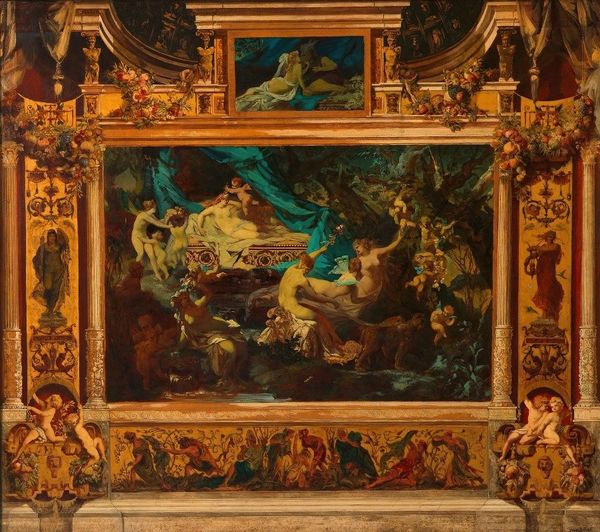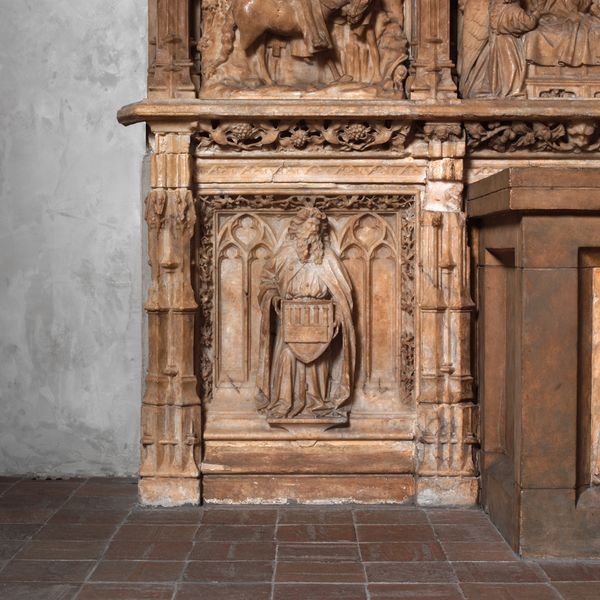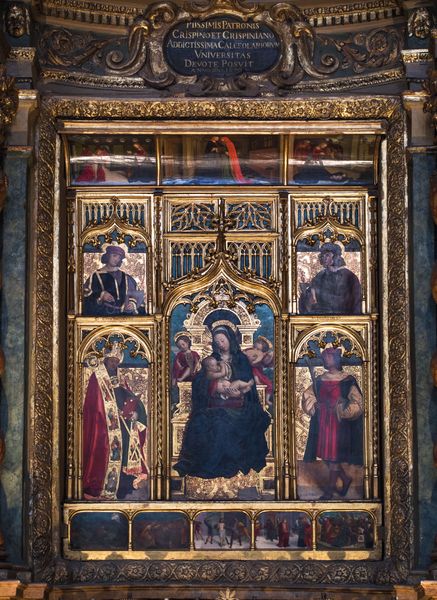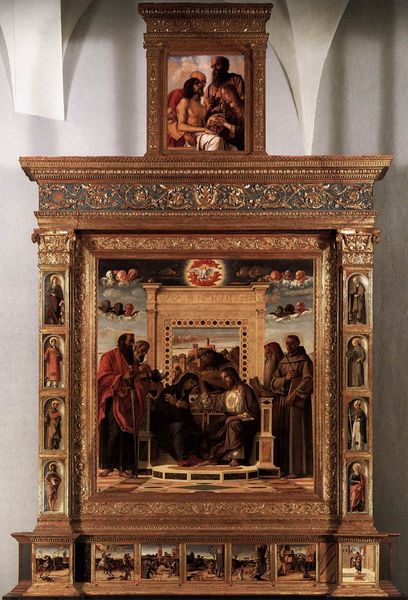
carving, relief, wood
#
interior architecture
#
medieval
#
carving
#
gothic
#
relief
#
furniture
#
wood
Dimensions: 28 3/4 x 67 1/2 x 24 3/4 in. (73.03 x 171.45 x 62.87 cm)
Copyright: Public Domain
Curator: This imposing object before us is a chest, or "cassone," dating from the 15th century. We believe it to be the work of an anonymous artist, crafted in wood, with particularly striking relief carving. Editor: The first thing that strikes me is its sturdiness and the elaborate detail, that dense network of pointed arches gives the chest a distinctly gothic feel. It speaks to the value placed on material possessions and their visual representation. Curator: Absolutely, its materiality tells us much about its place in society. Consider the sheer volume of labor that would have gone into its production. The careful carving speaks to highly skilled craftsmanship. It begs the question, who was commissioning such a piece, and what sort of wealth did it represent? Editor: Exactly, these chests held precious family possessions, important fabrics and clothes and valuables. These things weren't merely kept: they were placed in this potent signifier of lineage and prosperity that visually conveyed important messages about the owner's social status. I notice it's on display here at the Minneapolis Institute of Art, underscoring its enduring symbolic power within the realm of art and culture. Curator: Note the central panel depicting figures; it’s quite interesting that amidst all of this architectural detailing, this element makes this artwork also tell some story or history related to it. It prompts us to consider, what else could be stored or moved via it? Religious objects? Family heirlooms? What purpose would all of these goods and the artwork itself serve for social, political, and ideological goals of its commissioner? Editor: Looking at it this way transforms the chest from a simple piece of furniture to a fascinating object steeped in cultural relevance. And as a material object that has now entered the museum space, the layers of contextual interpretation around this piece continue to expand with its acquisition and continued curation. Curator: Indeed, analyzing this artwork as material shifts its function into more than aesthetic representation; as art displayed in an institution, it’s constantly repurposed. Editor: I think reflecting on how historical contexts affect this chest enables visitors to consider what social meanings still can be accessed and what remain hidden in plain sight today.
Comments
No comments
Be the first to comment and join the conversation on the ultimate creative platform.


